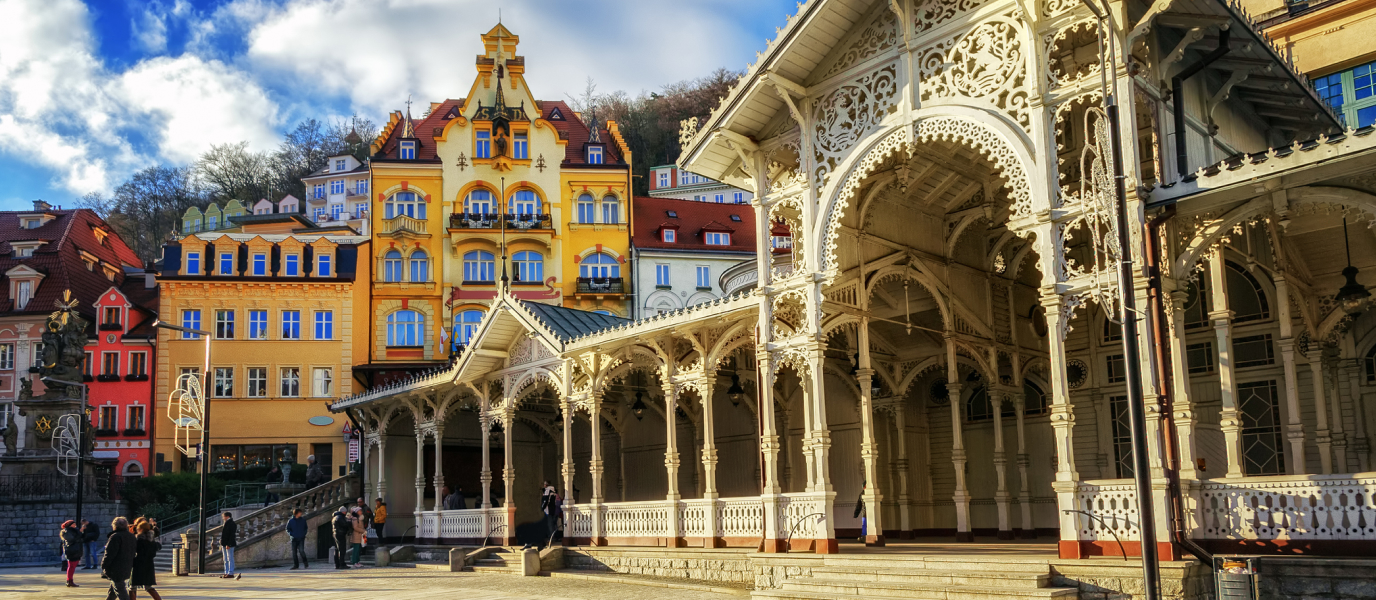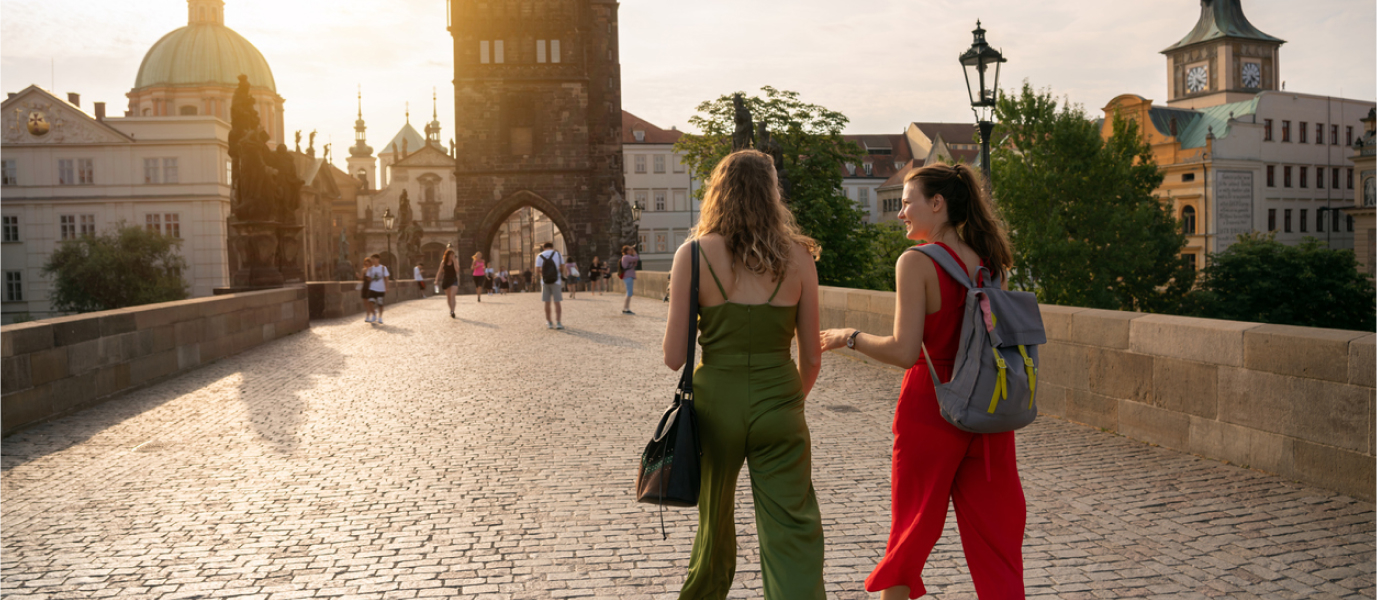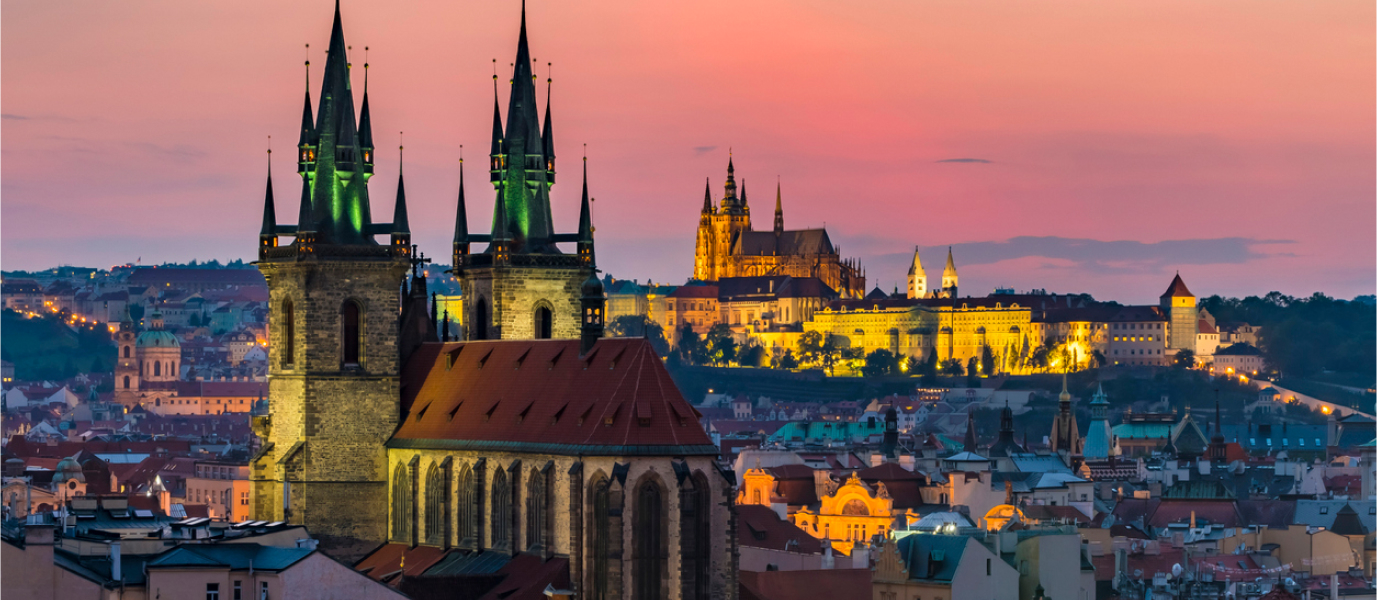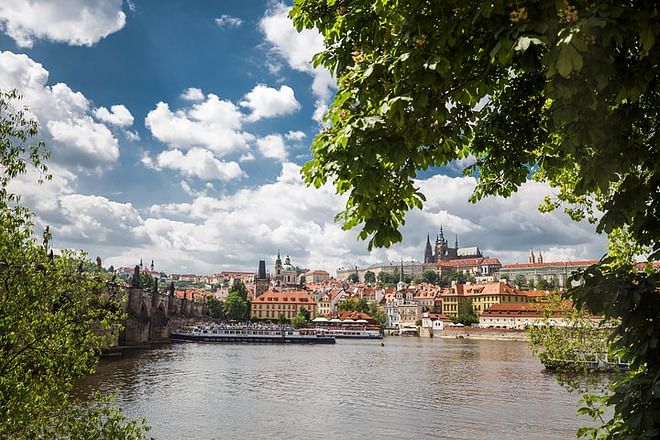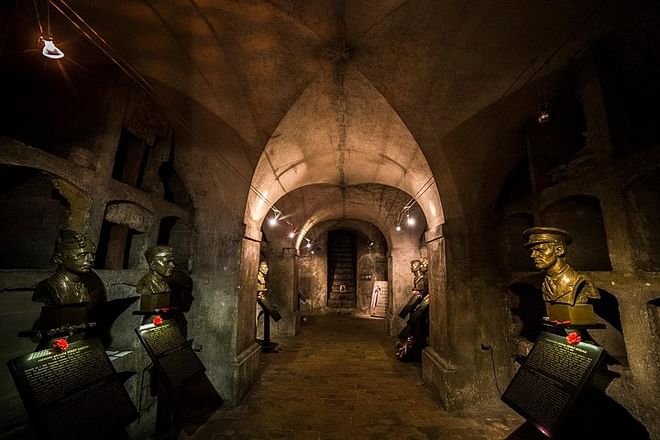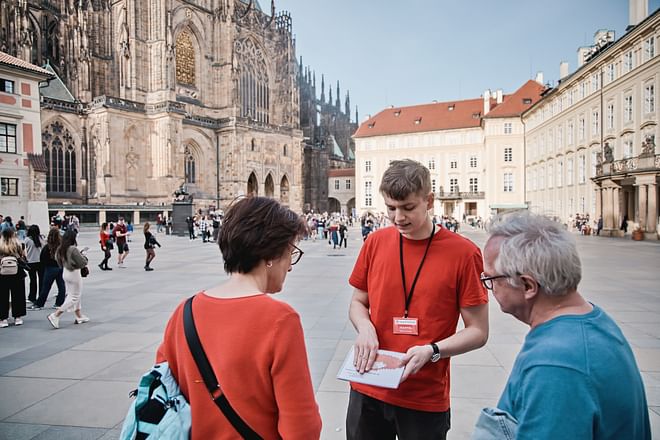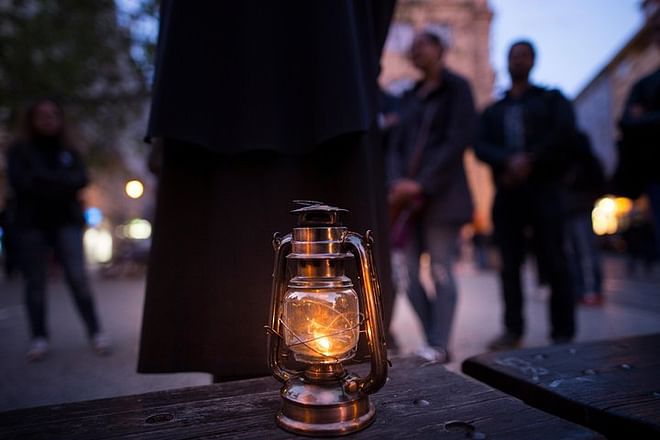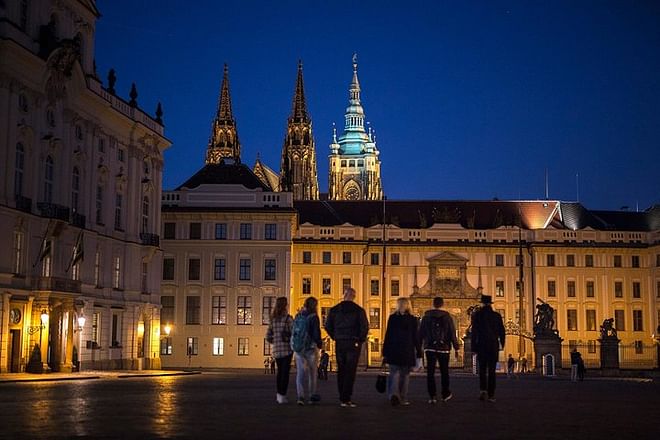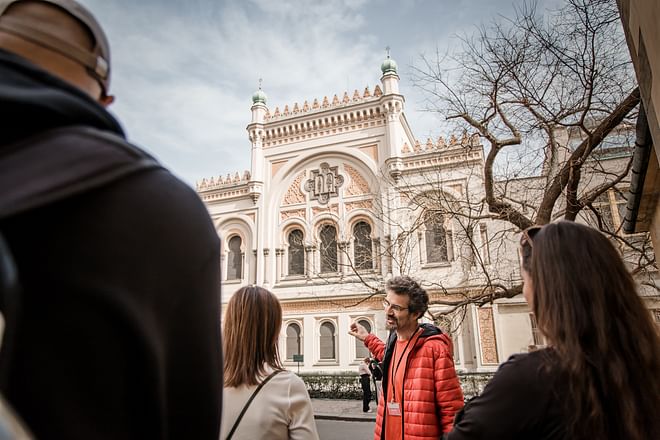Karlovy Vary is one town that no visitor to the Czech Republic should miss. Both its great beauty and its historic spas justify its position as one of the country’s most popular tourist destinations. The town’s proximity to Prague means that it can be visited on a day trip from the capital. Karlovy Vary is a relatively small town, with a population of around 50,000—just the right size to take in, stress-free, in a single day.
Karlovy Vary is a flagship in terms of hot springs, one of the most famous spa towns in Europe so, ideally, you would spend a night here in order to enjoy the excellent spas. And, equally important, to see the town’s illuminations.
Karlovy Vary’s spas: a stone’s throw from Prague
Karlovy Vary boasts 13 thermal springs, as well as 300 other minor springs. The town’s name means “Charles’ hot baths”, after Charles IV, the Holy Roman Emperor who founded the town in 1350. Charles IV discovered the curative powers of these waters when he found that they had cured a pain in his knee.
As a consequence of the growth in tourism and the interest in the benefits of thermal springs during the nineteenth century, the town attained international renown. Famous figures from all over Europe (including Beethoven, Chopin, Goethe and Peter the Great) travelled to Karlovy Vary to sample its waters. The springs are said to relieve gastrointestinal problems, muscular pain, metabolic disorders such as diabetes, obesity and gout, as well as periodontitis.
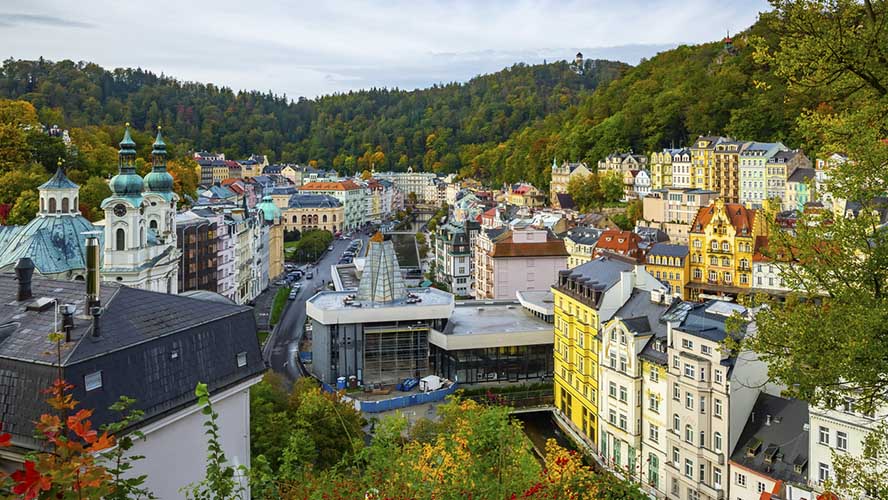
The town developed into the place we see today, with the aesthetic normally associated with spa towns. Great period hotels, French-style architecture ranging from the Baroque to Art Nouveau, large public amenity spaces and streets with many, many buildings housing hot springs.
Apart from the spas themselves, many of Karlovy Vary’s thermal springs can be accessed in what are known as colonnades: a kind of open pavilion or gallery with various fountains. There are three main colonnades: Mill, Market and Park. In Karlovy Vary, the most important aspect of the thermal therapy is the imbibing of the water from these fountains because of its properties. Experts recommend that visitors drink specific quantities from one or another particular fountain, depending on the specific ailment to be treated.
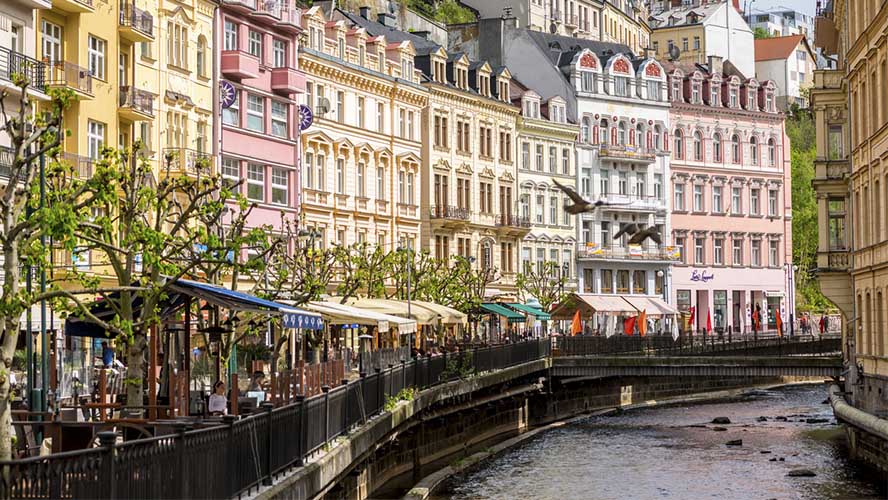
Mill Colonnade
A 123-metre-long building, supported on 124 Corinthian columns, houses 13 of the town’s hot springs. Built in 1881, this is the town’s most beautiful and famous colonnade, with its strong neo-Renaissance influence. The water spurts out at between 53 and 65 degrees, and has significant therapeutic properties.
The Mill Colonnade has the following springs:
- Mill Spring: 56 ºC. The city’s oldest spring, recommended since 1705.
- Rock Spring: 46.9 ºC.
- Libuse Spring: 62 ºC.
- Rusalka Spring: 60 ºC.
- Prince Wenceslaus’ Springs: 65 ºC.
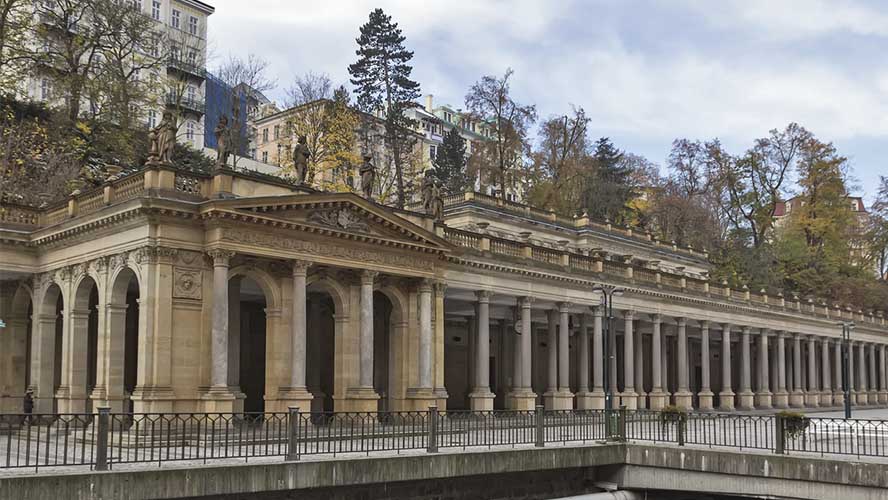
Other colonnades in Karlovy Vary
Apart from the Mill Colonnade, Karlovy Vary has two other colonnades:
- Market Colonnade. Built from wood in 1883, this colonnade is located in the town’s historic centre. It has the Charles IV spring (64 ºC), the Castle Spring (55 ºC) and the Market Spring (65.2 ºC). The Charles spring is of course the one used by the King in the fourteenth century, which led to the founding of Karlovy Vary.
- Park Colonnade. It stands in Drovak Park, and was built in 1881. This elegant colonnade has two springs which are very rich in carbon dioxide; the temperature of the Serpent Spring is 28.7 ºC, and that of the Park Spring is 41.6 ºC.
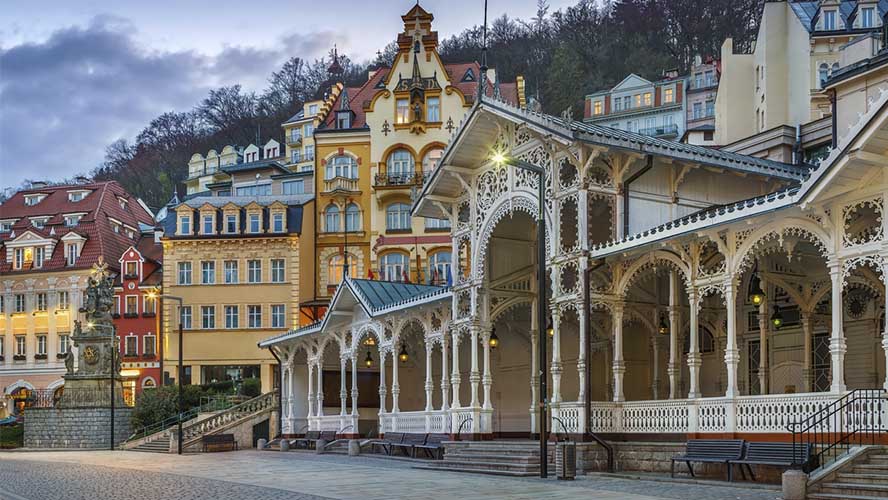
The Vrídlo Geyser
Apart from Karlovy Vary’s three colonnades, there are springs in various parts of the town. The most famous of these is the Vřídelní kolonáda (or hot spring colonnade) which, despite being a modern building (1975), houses the Vrídlo Geyser, a jet of water reaching up to 12 metres in height.
The Vrídlo Geyser is the city’s most popular spring. The water emerges hot (73 ºC) and is channelled into different containers to cool it down to either 50 ºC or 30 ºC. Two thousand litres of water gush from the geyser every minute.
Karlovy Vary jugs
To make the experience complete, anyone visiting Karlovy Vary should use one of the traditional porcelain jugs made for taking water from the springs. In the evening, hundreds of people gather with their jugs at the colonnades to queue for water, which they sip as they stroll around. A true ritual.
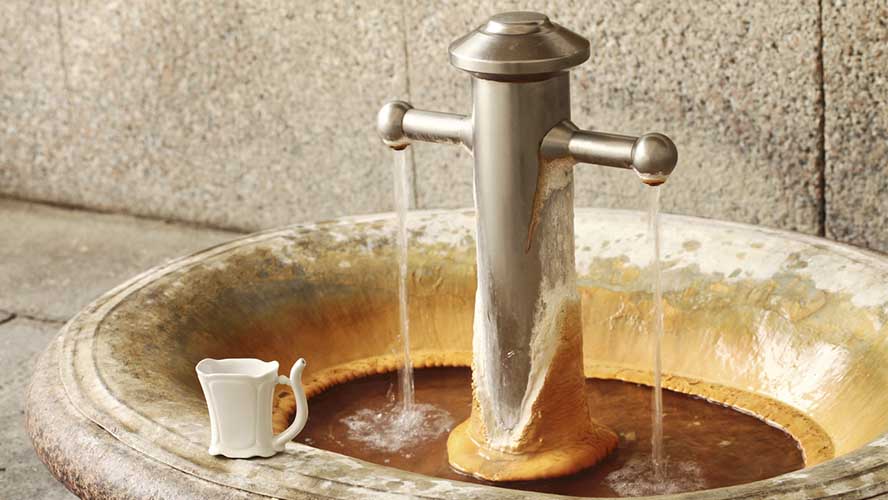
What else to see in Karlovy Vary, an essential stop-off
Obviously, the main reason for visiting Karlovy Vary is its spas. But this particular Czech city has other attractions too. Karlovy Vary is set in a luxuriant valley, and the River Tepla flows through it, giving the town a very distinctive appearance.
Together with the colonnades, springs, spas and hotels, we must not forget to visit:
- The Diana observation tower: A funicular takes you to this 40-metre-tall observation tower, built between 1912 and 1914. The tower affords a stunning view of the town and the lush forests around it.
- The Church of St Mary Magdalene: The town’s most important church, an example of Baroque architecture, which was built between 1733 and 1736.
- The Church of St Peter and St Paul: The fabulous Orthodox church built in the late nineteenth century by Russian visitors to Karlovy Vary’s spas.
- Drovak Park: The town’s lovely urban park, and the site of the Park Colonnade.




































































